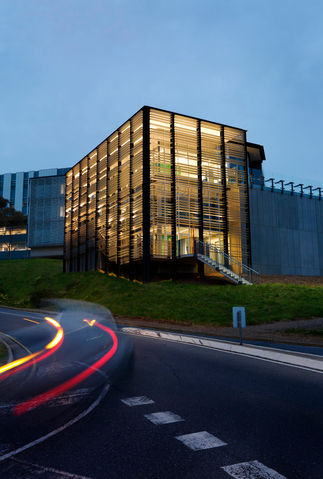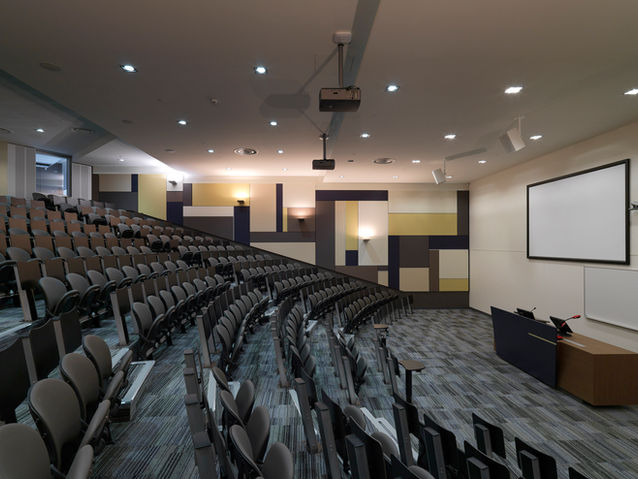FLINDERS UNIVERSITY HEALTH SCIENCES

FLINDERS UNI HEALTH SCIENCES TEACHING BUILDING
Grieve Gillett Architects was commissioned to design a new building for the Flinders University School of Medicine. With its own identity, this building relates to the adjacent Health Sciences building in form and materials, completing the ‘Health Sciences precinct’. The building also responds to and accommodates the existing pedestrian circulation paths from the main campus to the Medical School.
The building accommodates a 250 seat lecture theatre; eight seminar rooms; two meeting rooms, amenities, service rooms, and roof terrace. Materials are typically base material finish, robust and yet refined and chosen for longevity of performance and minimal maintenance. The lighting deliberately enhances the open ‘lantern’ nature of the architecture providing a functional and welcoming contact point for the campus after dark.
The prominent site slopes steeply to the northwest. The building, with commanding views sweeping in a continuous arc is designed to respect the site slope. Seminar rooms and the roof terrace address the western views while remaining protected from solar load by the extensive adjustable aluminium louvres. The general and vertical circulation addresses northern views to the CBD.

PROJECT DETAILS
Client: Flinders University
Location: Bedford Park, SA
Kaurna Country
Budget: $8.5 million
Completion: 2010
TEAM
Nicolette Di Lernia
AWARDS
2012 MBA (SA) Awards for Excellence in Commercial / Industrial Building $5M-$10M
2012 Steel Design Awards SA High Commendation - Buildings - Large Projects Steel Design
AIA 2011 (SA) Commendation and People's Choice for Public Architecture
2010 IES Award of Commendation - Lighting Design
"The building has a strong individual presence, particularly at night when its glazed facades and external orthogonal frame create a way-finding lantern marking the entry point to the campus."
- Jury Citation, 2011 Australian Institute of Architects











